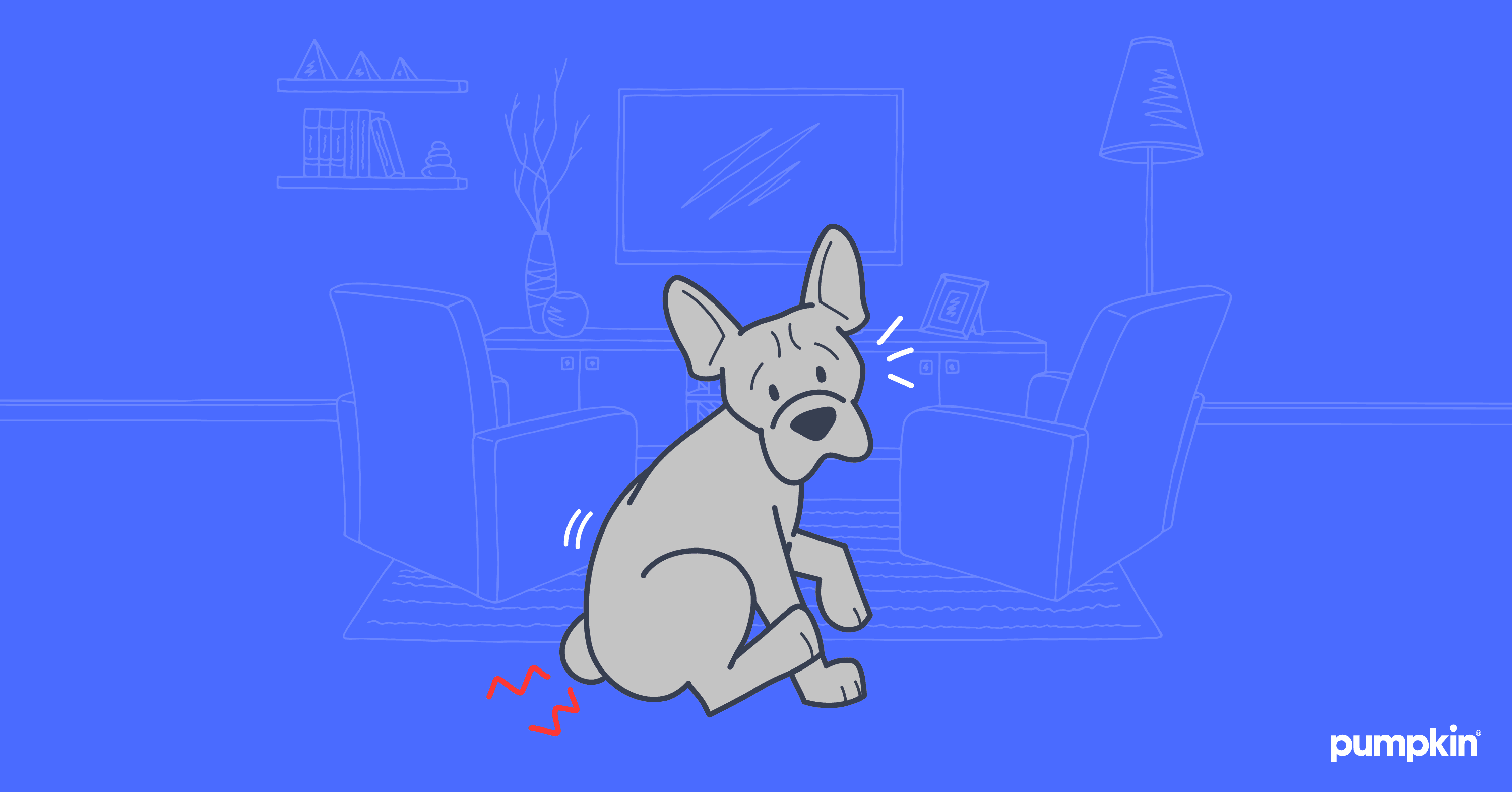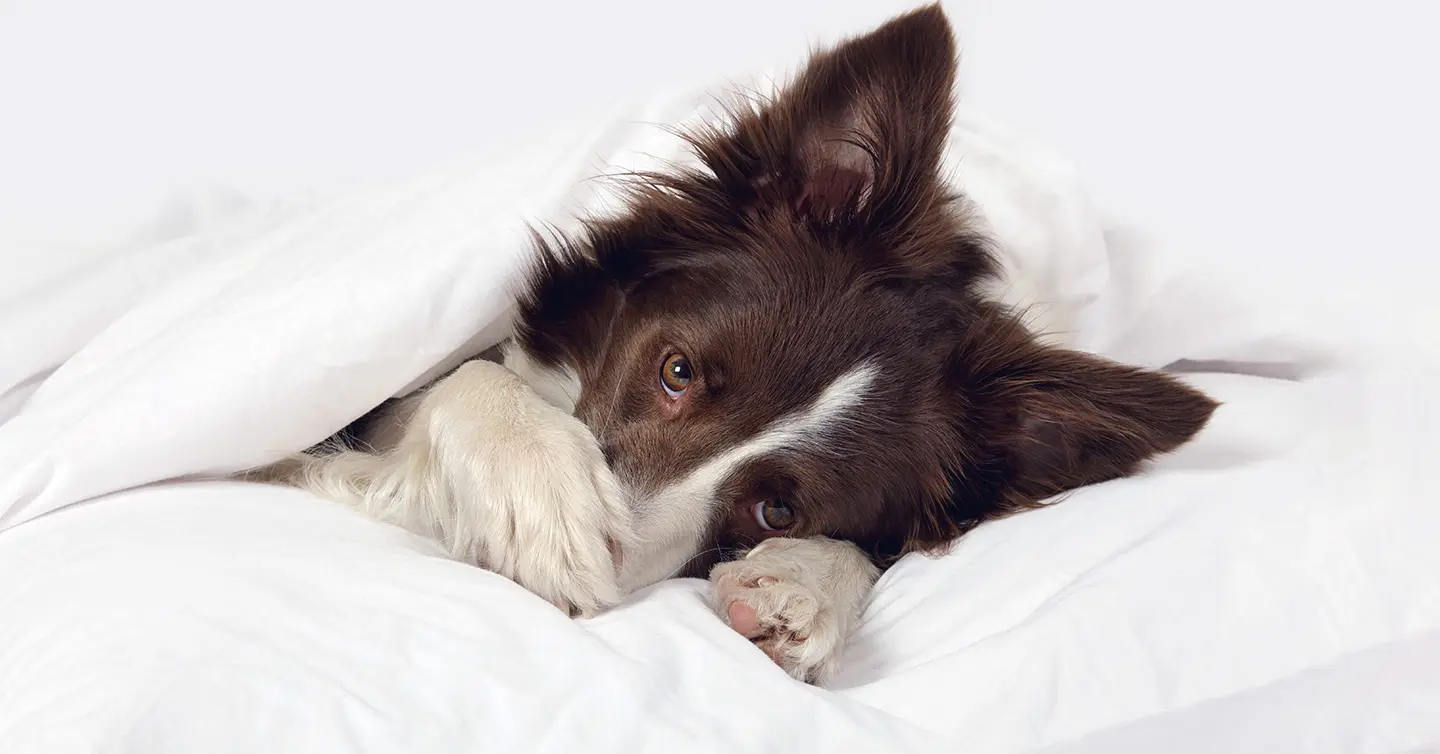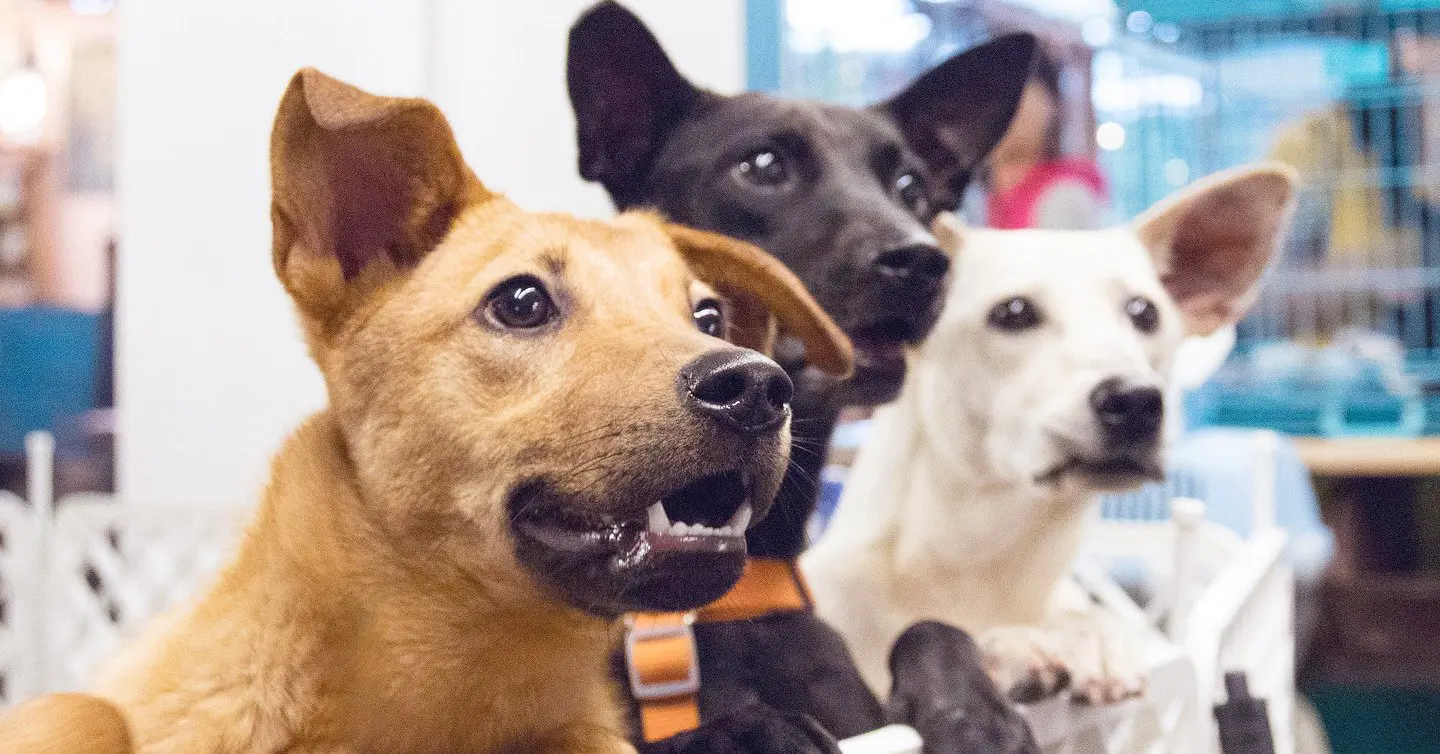Key Points:
- Dogs have two small sacs near their rectum called anal glands, which express fluid during defecation.
- If these sacs get clogged, anal gland expression releases the build-up; this is a common procedure, especially for certain breeds.
- While you can do this at home, you may prefer to have a veterinarian or groomer handle this uncomfortable procedure.
Is your dog scooting their butt across the floor and whining non-stop? They may have an anal gland issue, so learning how to express dog anal glands at home can provide relief.
We know that dog butt health isn’t the most fun topic for pet parents, but it’s important. At some point in your dog’s life, taking care of their health may mean expressing their glands. Here’s everything you need to know about this problem and how to perform anal gland expression at home.
How to identify anal gland issues
Every dog has two anal sacs full of glands that fill up with anal gland fluid, almost like sweat. When a dog poops, these glands release fluid. If the sacs are clogged or the fluid doesn’t release during defecation, your dog may have a gland impaction problem. This build-up of fluid is often caused by inflammation of the anal ducts, which can lead to anal gland infections and abscesses.
Some signs and symptoms to look out for include anal secretions, soft stools, and a foul-smelling anal area. We know that dog poop never smells like a bouquet of roses, but feces with a particularly fishy smell is indicative of inflamed or infected glands. Gland issues can also cause an itchy behind, which is one reason your dog may be scooting all over your floors.
If you see blood or pus around your dog’s anus, contact a veterinarian as soon as possible. These are signs of a more serious problem.
How to express dog anal glands at home
Once you’ve determined that there’s an issue with your dog’s glands, your groomer or veterinarian can help with anal gland expression. If you want to express your dog’s glands from home, follow these five steps:
- Prepare the area. Put on a pair of latex gloves and have ready a warm, soapy washcloth, along with Vaseline or another lubricant. Your dog should be standing on all fours, ideally with someone restraining them. You should also keep a paper towel nearby.
- Lubricate your index finger, lift your dog’s tail, and insert your finger one inch into their rectum.
- Place your thumb outside of your dog’s anus, and run your thumb with your finger, until you locate the anal glands. The glands are located at the 4 and 8 o’clock positions of your dog’s anus.
- Once you’ve located a gland, place a paper towel in front of the area, and apply pressure until the fluid squirts out.
- Once both glands are empty, use a washcloth to clean the area.
If you need a visual explanation, YouTube is full of step-by-step videos showing how to express dog anal glands safely. Still, unless you have a really trusting relationship with your pooch and are confident enough to complete the procedure quickly, it may be best to ask your veterinarian for assistance.
In the video below, you can see Sara Ondrako, a Certified Dog Behavior Consultant and PTSD Service Dog Trainer, expressing a dog’s glands by herself. However, even in professional settings, this is often a two-person operation, as you can see in a YouTube video by atDove, a veterinary training service. (This second video is worth watching if only for the priceless expression on the dog’s face.)
Lastly, you may be wondering if you really need to insert your finger into your dog’s rectum to properly express their glands. While there is an external technique, it’s not as effective as the traditional method, although it is easier for beginners.
If you’re not comfortable inserting a finger inside your dog’s rear, don’t hesitate to leave this task to your vet. Because expression can be painful and uncomfortable, some nervous dogs may need to be sedated beforehand.
How to prevent future anal gland issues
Your dog’s diet is a huge contributor to the health of their bowel movements. Make sure to buy dog food that’s high in fiber and avoids ingredients your dog may be allergic to. A low-fiber diet can cause constipation, and constipation blocks anal glands. If you have smaller dogs, such as Chihuahuas, Beagles, or Poodles, then take special care with your dog’s diet. These breeds are prone to anal gland issues. If your dog is having continuous or persisting gland issues, contact your vet.




